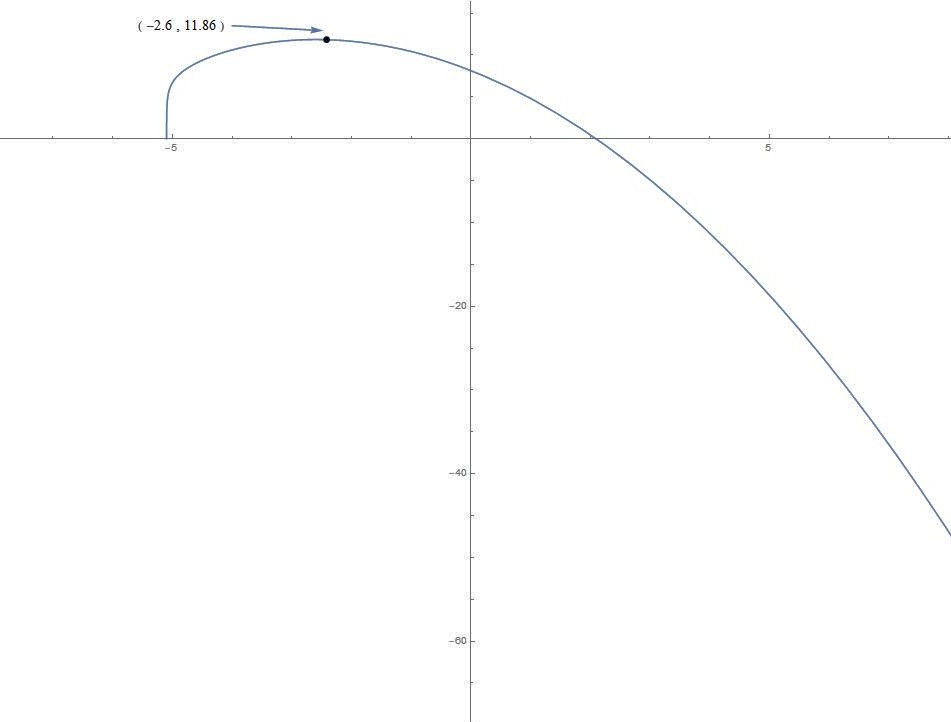We know that maximum, minimum and some inflection points have zero gradients. Using the first derivative will allow us to identify these points.
Derivative
#dy/dx(ln(x+5.1)-1/2(x+3)^2+11.02)=#
#1/(x+5.1)-(x+3)#
We now solve this for zero:
#1/(x+5.1)-(x+3)=0#
#1-(x^2+8.1x+15.3)=0#
#1-x^2-8.1x-15.3=0#
#x^2+8.1x+14.3=0#
#(x+5.5)(x+2.6)=0=>x=-5.5, x=-2.6#
When these values are put into the second derivative, we know that when:
#(d^2y)/(dx^2)>0# This is a minimum point.
#(d^2y)/(dx^2)<0# This is a maximum point.
#(d^2y)/(dx^2)=0# This is a maximum/minimum or point of inflection, and would have to be tested using the first derivative
Second derivative is the derivative of the first derivative, so:
#dy/dx(1/(x+5.1)-(x+3))=-1/(x+5.1)^2-1#
Plugging our values of #x# into this:
#-1/((-2.6)+5.1)^2-1=-1.16#
#-1/((-5.5)+5.1)^2-1=-7.25#
#-1.16<0#
#-7.25<0color(white)(888)# ( Maximum points )
Looking at #ln(x+5.1)#
For #x=-7.25#, we have:
#ln(-2.25)# ( No real solutions ).
Only #x=-2.6# is valid.
Plugging this into original equation gives:
#ln((-2.6)+5.1)-1/2((-2.6)+3)^2+11.02~~11.85629073#
GRAPH:



